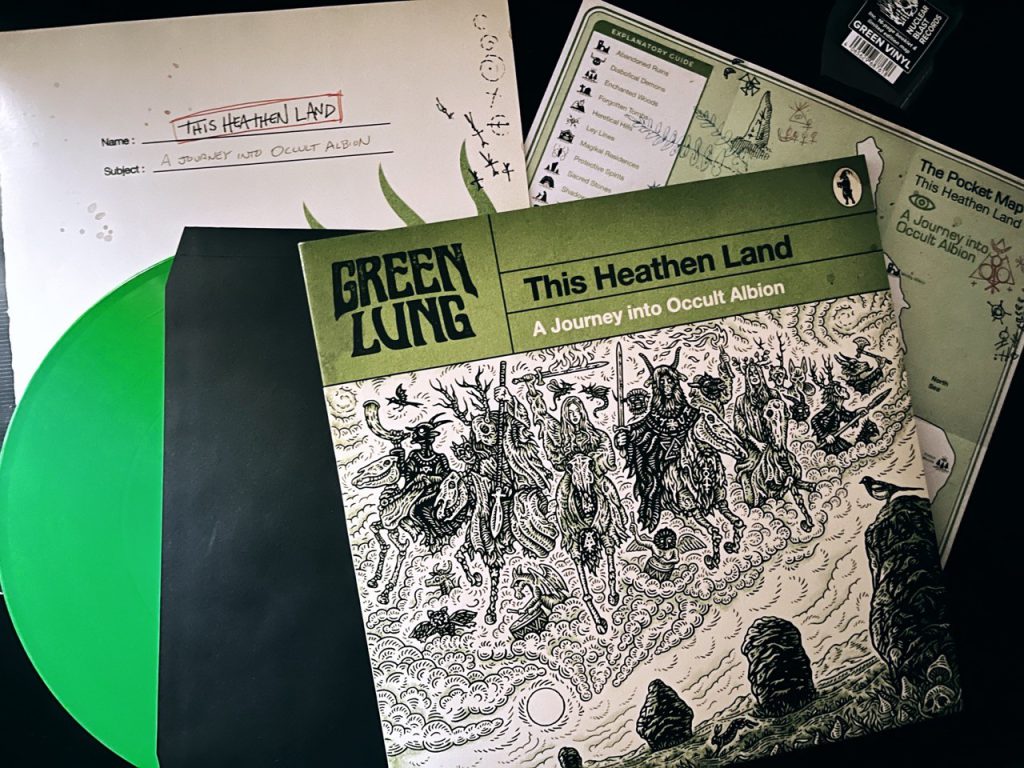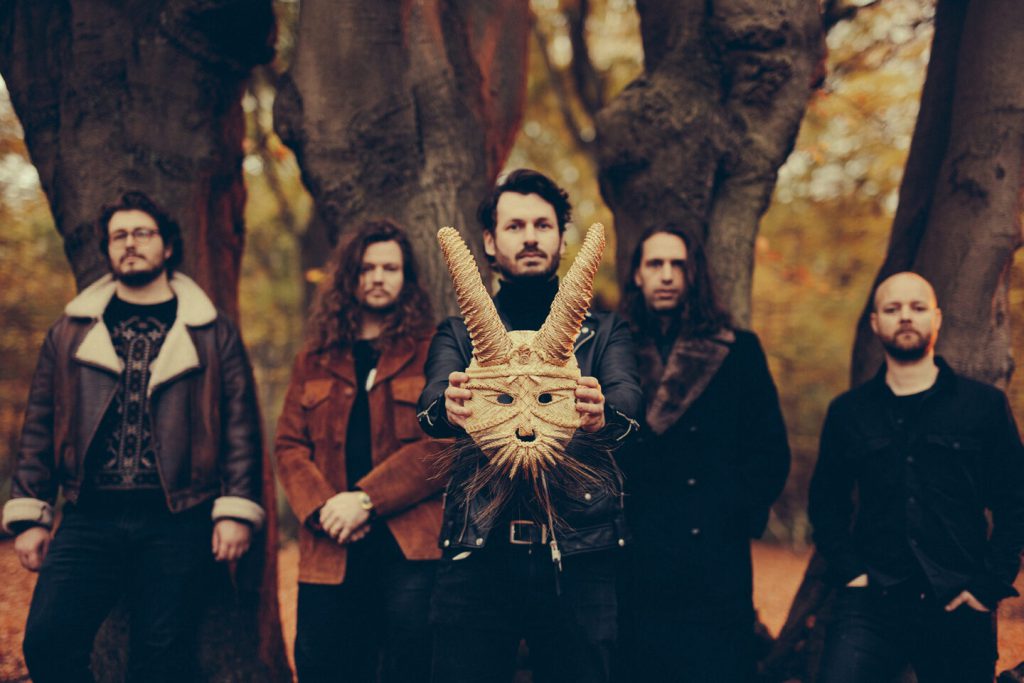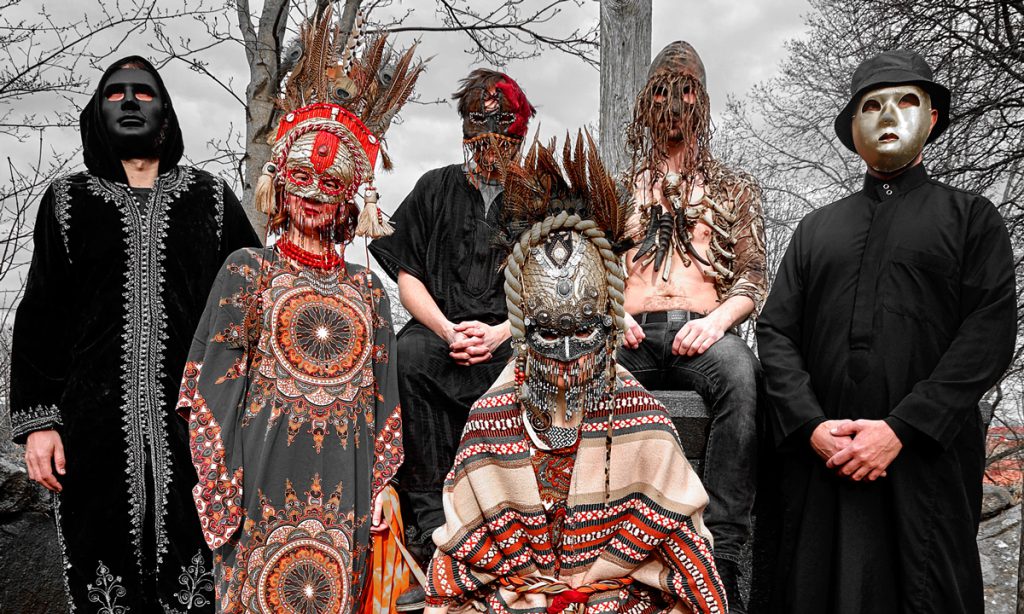Unleash the fandom: How a new breed of high-concept indie bands are pointing to a more sustainable future away from digital megamalls
With Elon Musk turning Twitter into 4Chan, Google full of hallucinated bullshit AI, Zuckerberg’s Metaverse folly and the sense that in building our homes on them, we’re investing in somethng that’s not just more temporary, but potentially more predatory than we had hoped, the world is falling out of love with platforms.
So what can the new wave of cottage-industry cult artists like Green Lung, Goat, The Church of the Cosmic Skull and King Gizzard & The Lizard Wizard tell us about the return to platform independence and everything-as-a-fandom?

Has there ever been a worse piece of corporate cosplay than its cult of innovation?
Every big tech firm, media organisation, business leader, drops it a dozen times a meeting. What they don’t tell you is that they can’t do it. And not only can’t they do it: the very idea frightens them. They talk about the Kodak moment; thrill each other with spine-chilling stories about IBM, and MySpace, BlackBerry and Quark.
But what every one of those whoops for innovation or disruption is really doing is whistling in the dark as the fire sputters.
The thing with disruptors is, they are always outside the walls. Pretending you’ve brought them inside, dressing up as one, proclaiming you have harnessed that force, is comfort magic. The shaman around the fire, masked as a jackal. The child on the pitch, clothed in the colours of Lionel Messi. If we say we are, will we become it?
And the platforms do it too. Meantime, brands keep pushing money into those platforms. One of my takeouts from spending time in Big Media is how much easier it is for businesses to think in transactional terms than relationship terms. They know that they should give brands more direct relationships with their public. But it’s easier to ‘buy eyeballs’ – giving Meta or Google or whoever money to send some momentary attention your way on their platform – than to risk making anything people see and think: “Yeah, I like that especially. I’ll keep coming back here.”
But the system’s broken. It’s not working for brands (they have to pay more all the time, their cost per aquisition never goes down), or platforms (they have to keep enshittifying their service to make the same amount of money in the place of rising competition). It’s a great term, by the way, courtesy of Cory Doctorow. Once you know Enshittification, you see it everywhere. Only you won’t hear about it inside the agencies.
So who can we look to for a way forward?
You might try the outsiders. If you really want to innovate, you’ll be with them – hackers, independent creators and technologists – not in the boardrooms Let’s take one current example.
I’ve said this before, but we’re living in a conceptual golden age in independent music. For all the editorials who look at a stale corporate scene and declare that rock/hiphop/indie (you can add and delete genres as appropriate) are dead or dying or so over, there’s something strange and rather wonderful happening. And it involves being – in fact it’s a specific policy choice to be – undetectable if you’re buying into the stats peddled by Spotify, or whoever. It thrives on direct connection. The line between customers, fans and investors is blurred, or nonexistent. It could not give a damn whether someone tweaks an algorithm. And it points to an alternate future for media of all stripes. I’ll explain.
One of my favourite bands of the moment is Green Lung, and this is the package you get with their new album, This Heathen Land: A Journey Into Occult Albion. A map, a workbook full of scribbles, a cover that pays tribute to mid-20th century books out on Penguin and its imprints, and a whole concept introduced in the first seconds… which comes in as the needle hits, with a crackly, old 1950s-BBC-documentary-style voiceover:
“Beyond the cities and motorways of modern Britain, away from the influence of its Christian churches and cathedrals, lies another country. An older, stranger country. A country of lonely tors and desolate moors, of forgotten woods and mysterious standing stones. You are about to embark on a journey into occult Albion. Come. It’s time to explore this heathen land…”

That’s the Prologue, and it opens the door on a fascinating album in every way; not east in the strange mood that it establishes, of heading away from the built infrastructure, and heading into a kind of return to the wild margins. It’s as much 1967 and John Wesley Harding and Cecil Sharp House as it is the Folk Horror Rebirth and the Old Weird Invisible Republic. Get back to the Earth. Leave the machine.
Just as enthralling – and right now, potentially part of a shift as great and inexorable as that of the 20th-century shift from moor to motorway – is how the bands themselves are creating these worlds as part of building their own microcultures and accompanying design cottage industries. And right now, that’s starting to make these worlds look like cultural weathervanes.
Artists like the Green Lung, masked and robed Swedish collective Goat, British cult-styled group The Church Of The Cosmic Skull, and prolific, experimental Melbourne psychedelicists King Gizzard & The Lizard Wizard are creating themselves not as bands along the traditional model, but as sealed, self-perpetuating, aesthetic worlds, complete with worldbuilding, principles, foundation myths and cosmologies. Permanently cloaked Goat, for example, have woven a backstory that involves them being members of a mysterious cult in the Arctic, with each album as a missive, while King Gizzard & The Lizard Wizard treat albums as conceptual experiments. Among their releases have been Quarters, an album of four songs each lasting exactly 10 minutes and 10 seconds; the year 2017, when they announced at the start they’d write and release five albums, and did it with minutes to spare; Flying Microtonal Banana, for which they had all their guitars remade to divide the frets into Eastern microtones, and wrote songs to see what happened when you filtered western rock through that system; and Nonagon Infinity, one of the 2017 releases, which functioned as an endlessly repeating cycle, using threes and nines as the basis for compositions instead of twos and fours and eights, and which incorporated the key melodies for each song in each other. It’s fantastic. But it’s also a method that picks up adherents to the band as an ongoing project in play and art and pushing at music to see what it is, rather than to individual releases. Their presence becomes something fans support as if it were a subscription towards the perpetuation of that world; their purchases a regular renewal. This changes the emphasis subtly. The artist need not treat each release like a discrete, make-or-break event. They can worldbuild. It’s analogous to the difference between writing movies and writing for steaming series.
The branding of bands is nothing new, or course. Bands like KISS, Parliament-Funkadelic, Bowie, Hawkwind and the Grateful Dead all constructed long-term aesthetics and characters, and open-ended relationships with their fans.
And perhaps P-Funk and the Grateful Dead are the two examples that most closely align. These worlds have their own aesthetics, backstories, concepts, and casts of characters from which occasional music issues. They are rapidly becoming as rich and allusive and organic and further-explorable as those of Tolkien, Rowling, George Lucas, a Dungeons & Dragons campaign, or that of any real religious sect. But these constructed worlds aren’t just as a way to build fandom that enters that world on its own terms, and stays with them, and screw airplay. They become the consistent lifestyle brand into which people buy.
To come in via one release is to enter a free-form class by John Cage or Tony Conrad; or like subscribing to a podcast, or embarking on a series. The work is not a succession of discrete points called songs or albums; it is an ongoing story about a way of seeing the world. The consistent and unfolding project is the thing.
It’s closer to joining the ranks of Apple fans than it is to streaming the latest Top 40 release. Don’t just buy a product every so often. Become a member of our cool aesthetic tribe, in which a hermetic online, user and live ecosystem evolve around you, offering you new interaction opportunities each day, and perhaps bringing new ways to spend and invest and be rewarded and collaborate.
The sudden flood of bands doing this, from the three above to an exciting development, and one that’s an answer – maybe the only one – to platforms like Spotify and Amazon Music scooping up and depriving bands of what used to be sales royalties and airplay fees.
The answer is physical sales, merch… and membership. Which in turn means that if you have a band, and you want it to gain traction, you have to create a corresponding cottage brand for it, that promotes the feeling outside of and beyond music. One that can survive because of a tight, direct connection. Truly indie.
But like every independence movement and declaration, it means evolving a strong brand first, from national costume to folklore, flag, mythologies and manifestos of beliefs. And it’s partly this that distinguishes these new bands and creators from the evolving, peripatetic worlds of George clinton and co.

And as I sit typing this, Goat’s label announced they’d no longer be relying on Bandcamp, after the platform’s controversial Songtradr acquisition, subsequent layoff of 50% of its staff, and inevitable pivot) but migrating everything to their own site, RocketRecordings.com. Platforms, having told everyone to migrate to their digital malls and “fish where the fish are”, have taken our connections with our customers hostage. I’ve threaded this on my Mastodon, a federated, non-owned platform that’s risen to popularity partly because a billionaire bought Twitter & killed its audience.

I can’t help feeling these bands tell us something good about cultivating our own online platforms.
It’s that brands, just like bands, just like news organisations, just like people, got sold the free lunch. Give your whole presence to Twitter/X (we’ll pull the carpet from undeneath you, flood your mentions with Nazis, and bullshit you on the metrics). To Facebook (we’ll take your audience, and then charge you more to access them, choking you off if you don’t pay). To YouTube (bait-and-switch for performance). Let your own site lapse, and just publish Instant Articles direct on our platform. Fish where the fish are. Don’t even think about building your own home, when you can play, shop, exhibit, sell, in our mall. Pay to play. Again and again and again.
Now, in the dawning of the age of first party data, dorect ownership and fandoms, the disruptors are outside the gate again.
They’re playing all sorts of interesting music. But what they can tell us goes much further.